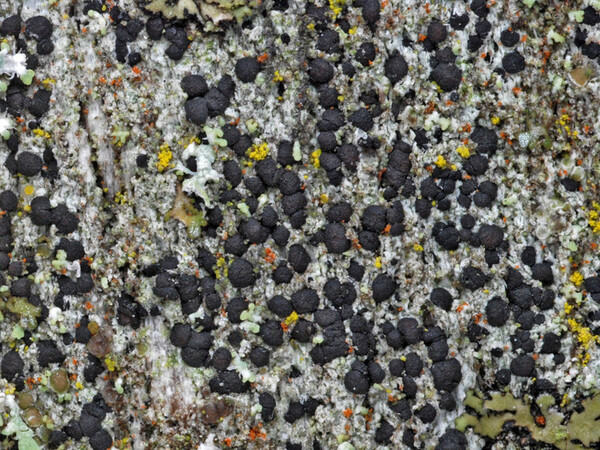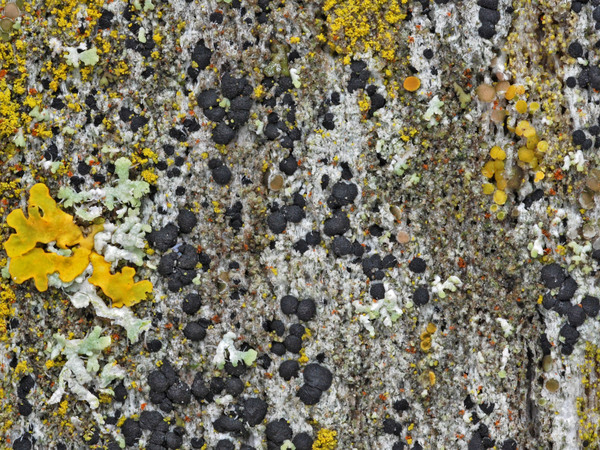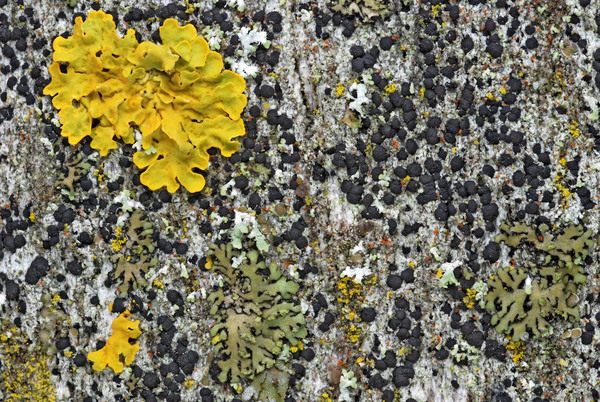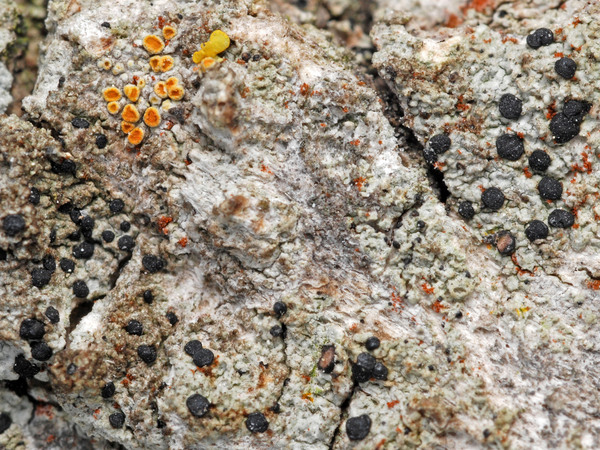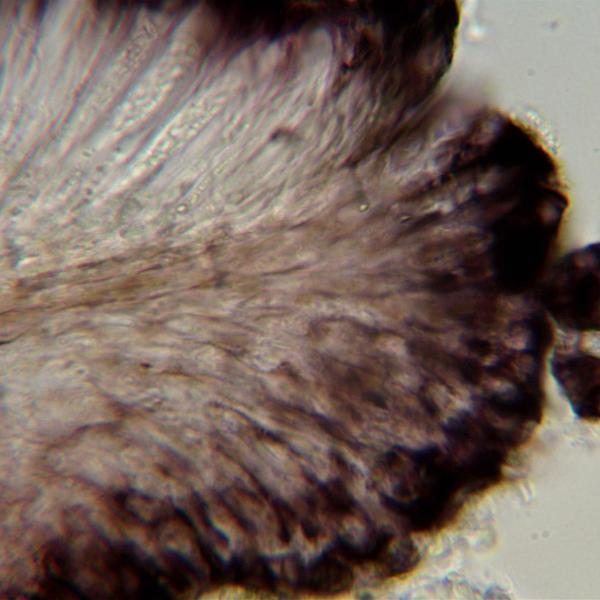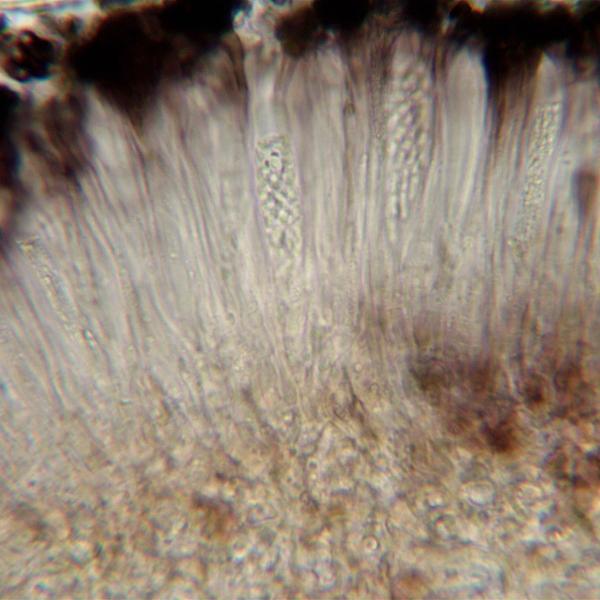Bibbya vermifera (Nyl.) Kistenich, Timdal, Bendiksby & S.Ekman
Taxon, 67: 892, 2018.. Basionym: Lecidea vermifera Nyl. - Bot. Not.: 98, 1853.
Synonyms: Bacidia hegetschweileri auct. non (Hepp) Vain.; Bacidia vermifera (Nyl.) Th. Fr.; Biatora atrosanguinea f. hegetschweileri auct. non Hepp; Bilimbia lecideoides (Hazsl. ex Körb.) Th. Fr.; Scoliciosporum vermiferum (Nyl.) Arnold
Description: Thallus crustose, continuous, rimose-areolate, or warted-areolate, white to grey or brown-grey, sometimes poorly evident. Apothecia lecideine, black to rarely dark brown-black, 0.2-0.5 mm across, with a persistently flat to slightly convex, epruinose disc, and a distinct, persistent or rarely finally excluded, concolorous proper margin. Proper exciple 26-45 μm wide laterally, without crystals, the outer rim black-brown or dark red-brown (sometimes paler in lower part), K+ purple-red, without a layer of enlarged cells, the medullary part colourless or very pale brown; epithecium purple-brown to dark brown, scarcely differentiated from hymenium, K+ intensifying purple; hymenium (35-)45-50(-70) μm high, colourless except for occasional vertical brown streaks; paraphyses mostly simple, 1-1.5(-2) μm thick at mid-level, the apical cells clavate, 3.5-4(-6) μm wide; hypothecium colourless or very pale brown; all pigmented parts of apothecia N+ orange-red. Asci 8-spored, clavate, the apical dome K/I+ dark blue with a pale, conical-pointed apical cushion (axial mass), the wall I-, but the thin outer gel I+ blue, Bacidia-type. Ascospores 3-7-septate, hyaline, bacilliform or clavate, usually strongly curved or sigmoid, rarely almost straight, coiled in the asci, (14-)16-35(-40) x 2-3(-4) μm. Pycnidia half-immersed, black, the wall K+ brown-purple. Conidia 1-celled, hyaline, of two types: a) ellipsoid or short-bacilliform, 2.8-3.6 x 1.2-1.6 μm, b) bacilliform, straight or slightly curved, 6-9 x 0.5-0.8 μm. Photobiont chlorococcoid, the cells 5-14 μm in diam. Spot tests: thallus K-, C-, KC-, P-, UV-. Chemistry: thallus without lichen substances; apothecia and pycnidial walls with the Laurocerasi-brown pigment.
Growth form: Crustose
Substrata: bark
Photobiont: green algae other than Trentepohlia
Reproductive strategy: mainly sexual
Commonnes-rarity: (info)
Alpine belt: absent
Subalpine belt: very rare
Montane belt: very rare
Dry submediterranean belt: absent
Humid submediterranean belt: absent
Padanian area: absent
pH of the substrata:
1 2 3 4 5
Solar irradiation:
1 2 3 4 5
Aridity:
1 2 3 4 5
Eutrophication:
1 2 3 4 5
Poleotolerance:
0 1 2 3
Altitudinal distribution:
1 2 3 4 5 6
Rarity
absent
extremely rare
very rare
rare
rather rare
rather common
common
very common
extremely common
Loading data...
Occurrence data
Predictive map
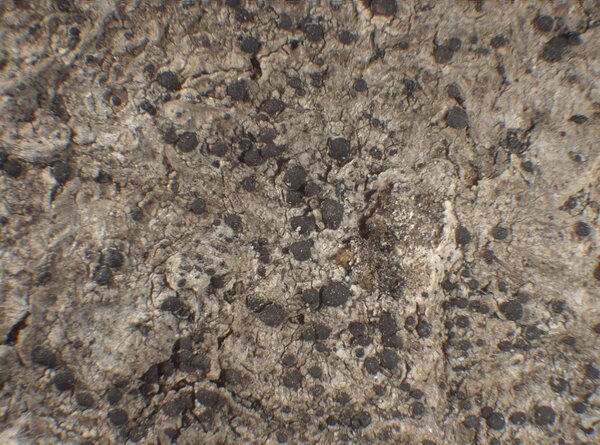
E. Pittao; Owner: Department of Life Sciences, University of Trieste
Herbarium: TSB (28078)
2008.03.31
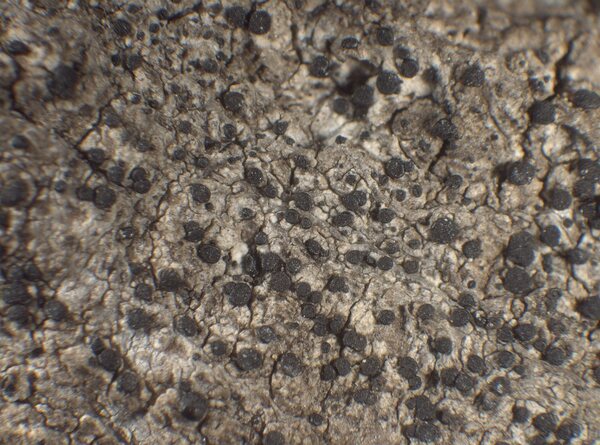
E. Pittao; Owner: Department of Life Sciences, University of Trieste
Herbarium: TSB (28078)
2008.03.31
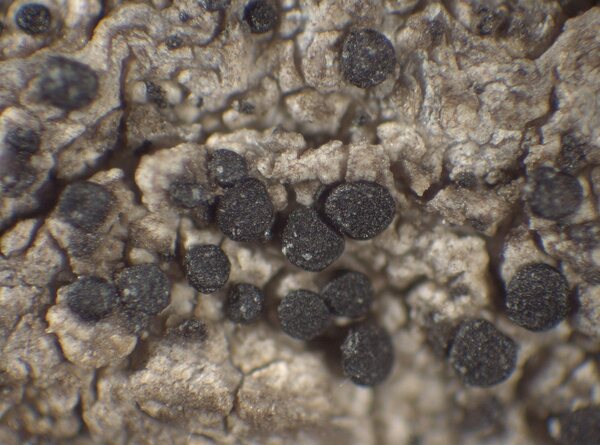
E. Pittao; Owner: Department of Life Sciences, University of Trieste
Herbarium: TSB (28078)
2008.03.31
Growth form: Crustose
Substrata: bark
Photobiont: green algae other than Trentepohlia
Reproductive strategy: mainly sexual
Commonnes-rarity: (info)
Alpine belt: absent
Subalpine belt: very rare
Montane belt: very rare
Dry submediterranean belt: absent
Humid submediterranean belt: absent
Padanian area: absent
pH of the substrata:
| 1 | 2 | 3 | 4 | 5 |
Solar irradiation:
| 1 | 2 | 3 | 4 | 5 |
Aridity:
| 1 | 2 | 3 | 4 | 5 |
Eutrophication:
| 1 | 2 | 3 | 4 | 5 |
Poleotolerance:
| 0 | 1 | 2 | 3 |
Altitudinal distribution:
| 1 | 2 | 3 | 4 | 5 | 6 |
Rarity
absent
extremely rare
very rare
rare
rather rare
rather common
common
very common
extremely common
Loading data...
Occurrence data
Predictive map

E. Pittao; Owner: Department of Life Sciences, University of Trieste
Herbarium: TSB (28078)
2008.03.31

E. Pittao; Owner: Department of Life Sciences, University of Trieste
Herbarium: TSB (28078)
2008.03.31



